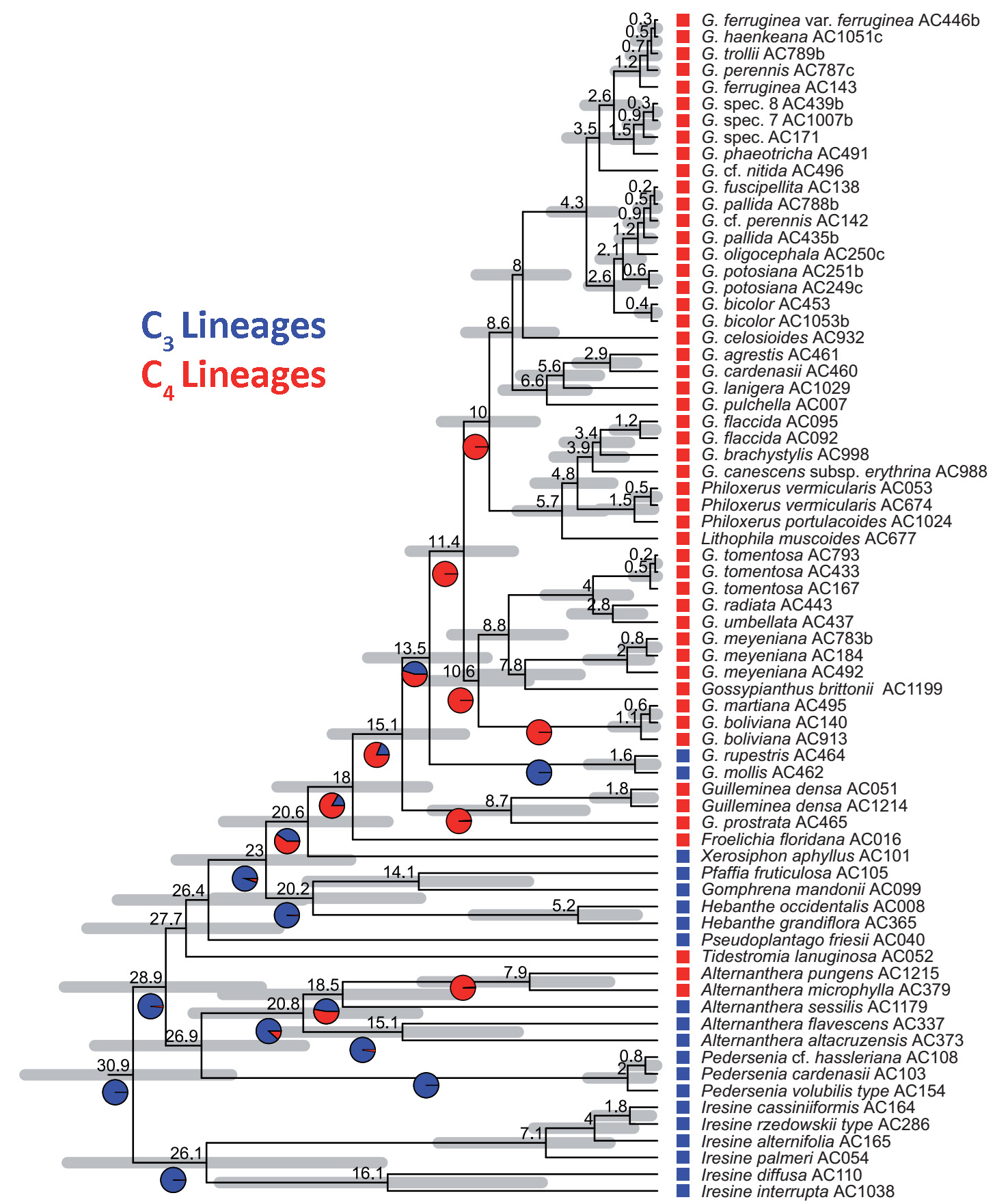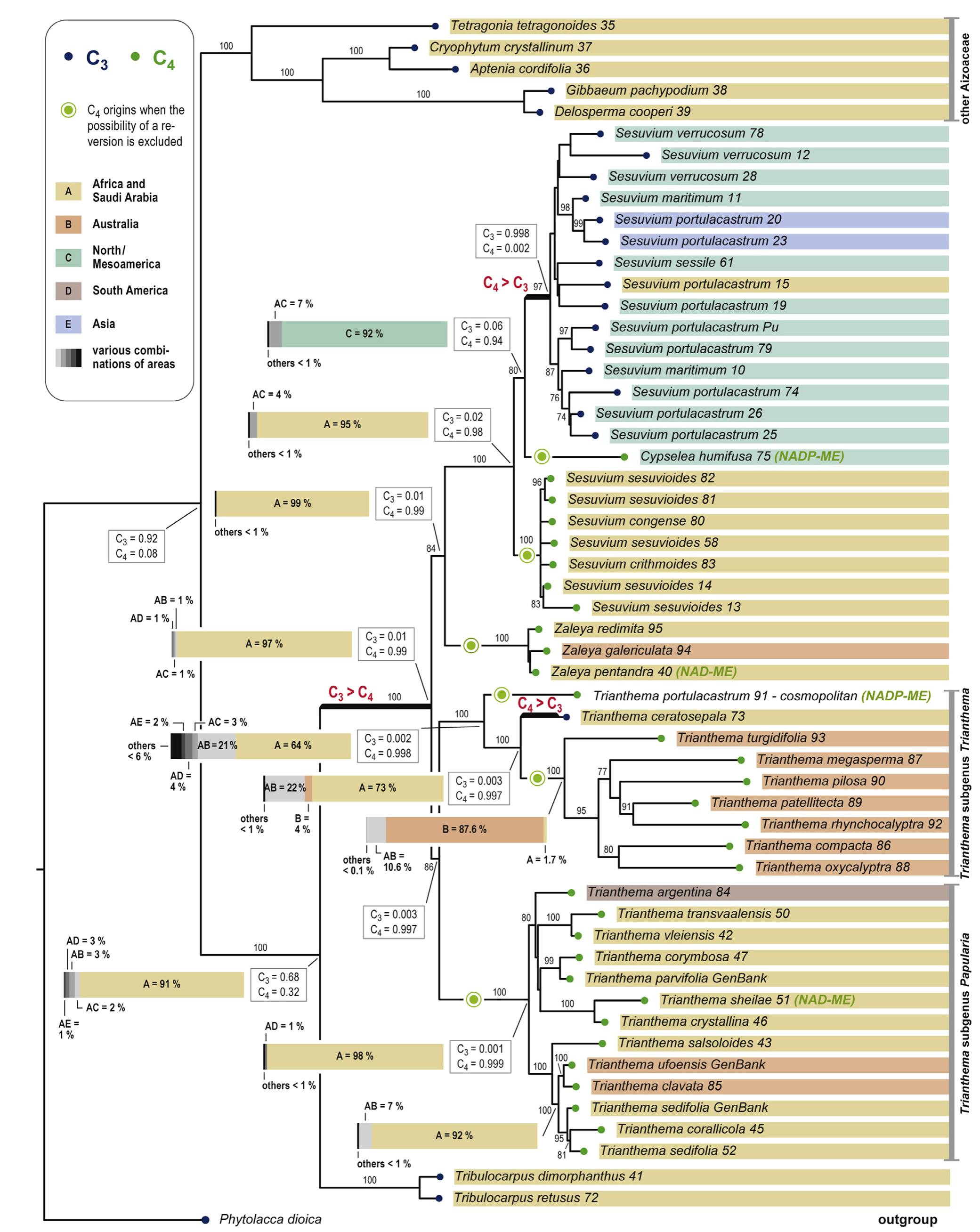

With atmospheric CO2 concentrations rapidly rising and shifting the competitive balance from C4 to C3 species in many ecosystems, it is worth asking whether reversion from C4 is possible. There is no unambiguous and incontrovertible evidence of reversion from a fully C4 state. If a C3 clade were phylogenetically nested deep within a larger C4 clade reversion would be the only possible explanation. However, this has not been observed. In all cases where C3 or C2 branches occur within a C4 clade it is equally or near-equally parsimonious to hypothesize multiple transitions to C4 rather than reversion.11,12,15 In many cases other lines of evidence support multiple transitions rather than reversion, for example different metabolic subtypes in the surrounding C4 clades.11,12 One reason why it may be difficult to revert from C4 to C3 is the simultaneous reacquisition of Rubisco and the Calvin cycle in mesophyll cells – this may represent a arrier for evolution, with no fitness advantage for the individual steps involved.
If C4 reversion has occurred, comparative genomics could identify lingering signatures of C4 ancestry in C3 or C2 taxa. Conversely, if lineage patterns that could be explained with reversion instead represent multiple acquisitions of C4 photosynthesis, then we expect to find evidence of different gene copies co-opted to C4 function or independent bouts of positive selection on C4 cycle genes. By sequencing putative revertants and their closest C4 sister species, we aim to clarify whether reversion from C4 has ever occurred, and whether we may expect this to occur in a high-CO2 future resulting from human emissions.
citations:
- Bohley, K. et al. Phylogeny of Sesuvioideae (Aizoaceae) – Biogeography, leaf anatomy and the evolution of C4 photosynthesis. Perspect. Plant Ecol. Evol. Syst. 17, 116–130 (2015).
- Ocampo, G. & Columbus, J. T. Molecular phylogenetics, historical biogeography, and chromosome number evolution of Portulaca (Portulacaceae). Mol. Phylogenet. Evol. 63, 97–112 (2012).
- Limarino, T. O. & Borsch, T. Gomphrena (Amaranthaceae, Gomphrenoideae) diversified as a C4 lineage in the New World tropics with specializations in floral and inflorescence morphology, and an escape to Australia. Willdenowia (2020) doi:10.3372/wi.50.50301.